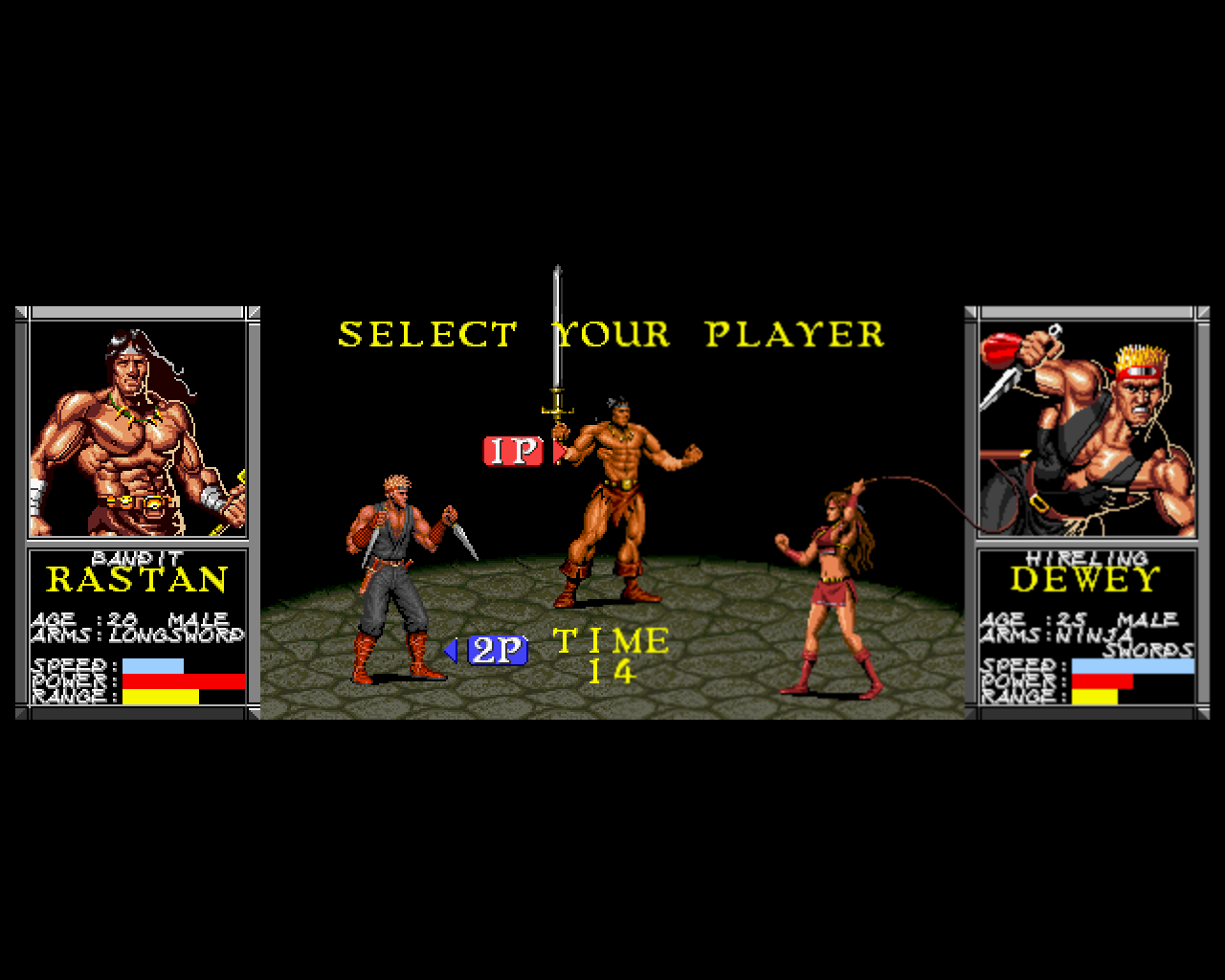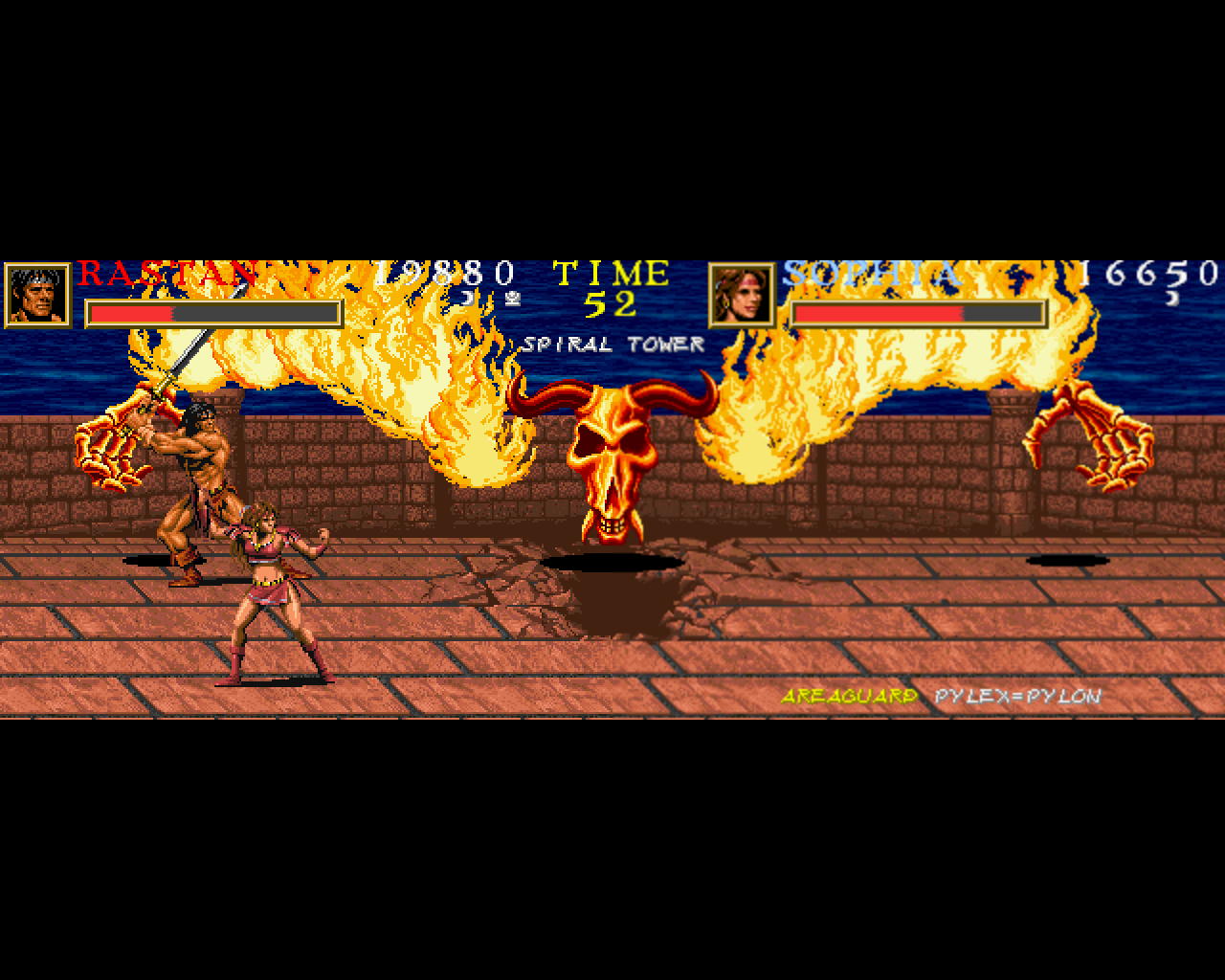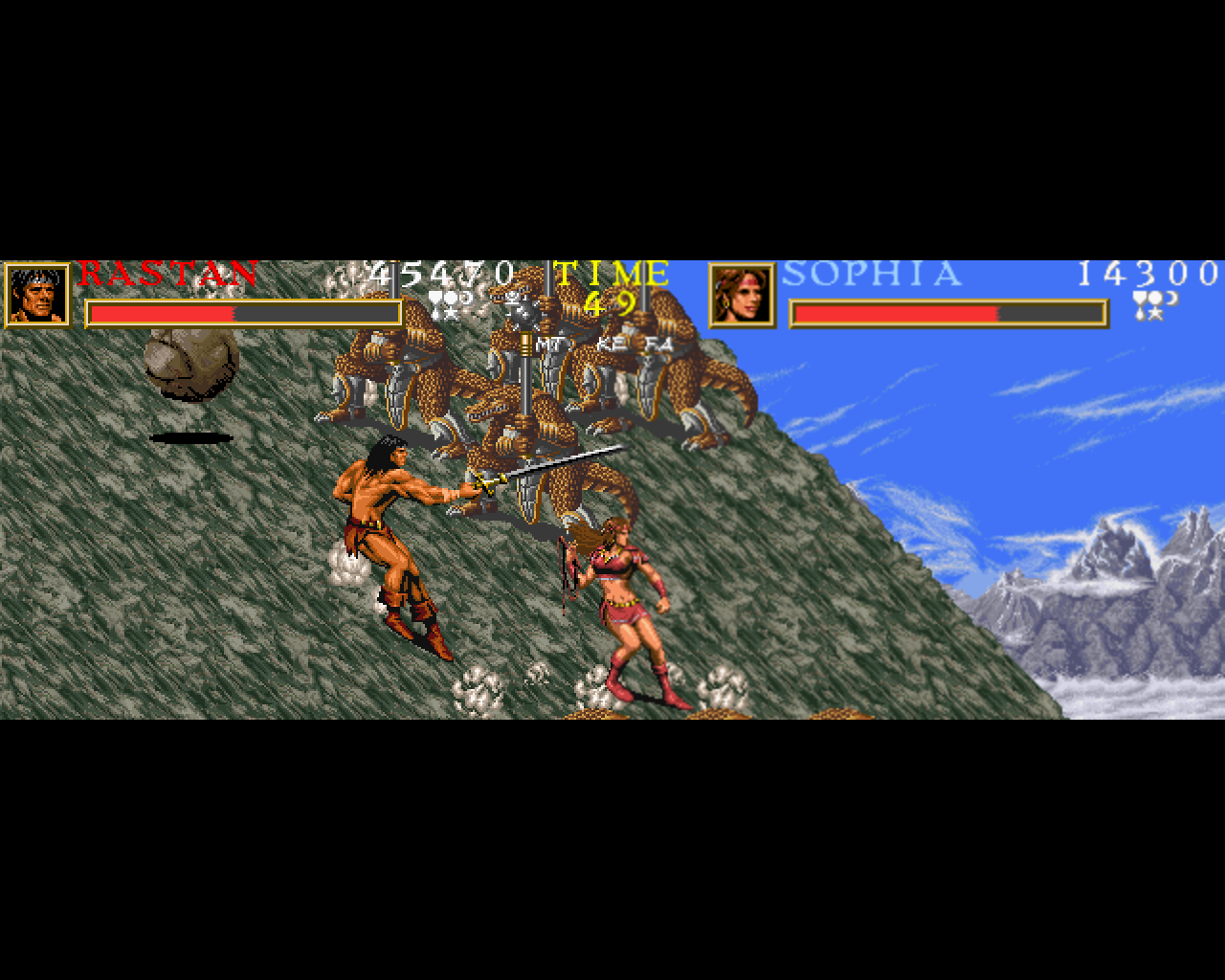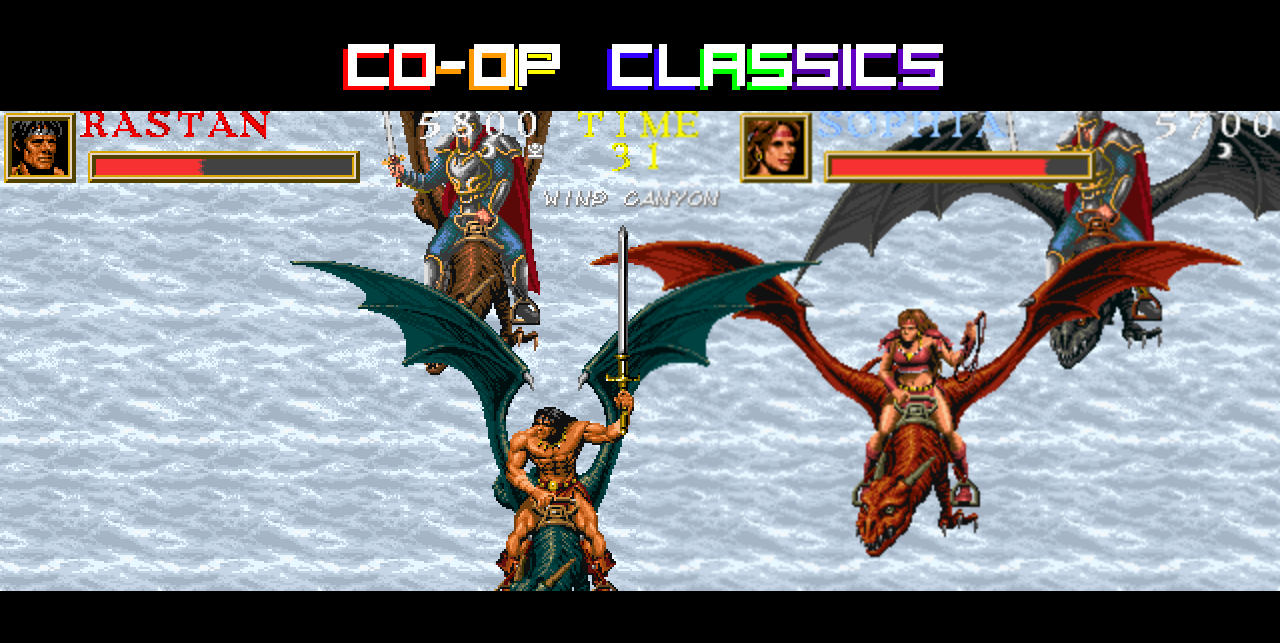The recently released Egret II Mini arcade cabinet includes Rastan, Taito’s classic fantasy-themed action-platformer. The game’s two sequels, however, didn’t make the cut. Thankfully, all three Rastan games are available on the iiRcade home arcade platform. In fact, Warrior Blade: Rastan Saga Episode III just released on iiRcade. Given that Warrior Blade is a gorgeous 2-player co-op beat ‘em up that has never been officially released in English markets before now, this release is the perfect excuse to revive our Co-op Classics column with an in-depth look at the game.
First, a series primer: the original Rastan appeared in arcades in 1987 before being ported to Sega Master System and home computers. The sequel, egregiously titled “Nastar Warrior” in North America, hit arcades in 1988 and Sega Genesis in 1991, adding 2-player co-op but losing some quality in art and gameplay. Warrior Blade: Rastan Saga Episode III debuted exclusively in Japanese arcades in 1991, never getting ported to a home system until a Japanese Taito Memories collection for PlayStation 2 in 2007. The iiRcade version is the first time that Warrior Blade has officially sold outside of Japan.

Ditching the action-platforming gameplay of its predecessors, Warrior Blade is a beat ‘em up. The arcade version utilized a 2-monitor display to create an ultrawide playing field (much like that of Dariusburst: Chronicle Saviors). The iiRcade version letterboxes the image in order to retain the original aspect ratio. It’s not a perfect solution, but it works. Battling through the game’s panoramic environments is certainly a unique experience.
To start, one or two players will select from three characters: Rastan the sword-swinging barbarian, Dewey the dagger-slicing “hireling” (obviously a ninja), and Sophia the whip-wielding thief. Each character has differing stats and slightly different moves, including a health-draining special move. The special moves don’t impress as much as the magic attacks from Sega’s Golden Axe, however, nor is the health-draining mechanic quite as distinctive and appropriate as consuming magic potions.

Actual gameplay is fairly typical for an arcade beat ‘em up. The three heroes can slash, jump, and dash, though dashing is not nearly as useful as in Golden Axe and other games. Some characters can throw enemies as part of their basic attack combos, but the game lacks a proper grapple system that would add some depth. Breakable objects sometimes contain score-giving treasures (which also award small health bonuses at the end of the stage), health-refilling items, and actual powerups. These powerups give the heroes the ability to hurl fire or lightning and even summon a friendly wizard. The summoned NPC will cast random spells when players use their special moves, though it would be more immersive if he just fought independently.
The game consists of six stages: a short prelude in the forest, four middle stages, and a finale on the enemy’s island. The four intermediate stages can be tackled in any order, adding a hint of replay value. Each of these interim stages awards a permanent stat boost upon completion, such as increased health or speed. Stages begin and end with well-written cinematic screens that create atmosphere and establish the narrative of the heroes’ journey.

Speaking of stages, their creativity and variety are among Warrior Blade’s most impressive features. Most stages begin with exciting auto-scrolling segments with the heroes on horseback, flying on dragons, and more. These segments provide a break from the typical beat ‘em up gameplay while instilling some adrenaline and urgency into the adventure.
Regular stages also include diverse elements like climbing up and down chains, jumping across chasms (mercifully easy to do compared to some beat ‘em ups), and even scrolling LEFT (!!!) instead of right. That’s to say nothing of the dazzling array of bosses, including a skeletal monstrosity, a multiheaded dragon, a gigantic, carnivorous plant, and more. They all look fantastic, as in both gorgeous and perfectly fitting an epic fantasy adventure.
Taito’s Warrior Blade might never reach the heights of the competing Golden Axe: The Revenge of Death Adder (the high-water mark of arcade fantasy beat ‘em ups, released in 1992), but it’s still a worthwhile genre entry. Rastan himself has always been a Conan the Barbarian knock-off, which this game’s ending makes perfectly clear. Conan was once asked, “What is best in life?” Well, crushing your enemies and hearing the lamentation of their women is all well and good, but beautiful arcade beat ‘em ups are surely right up there on the greatness scale!
Warrior Blade: Rastan Saga Episode III sells for $12.99 on the iiRcade home arcade platform. iiRcade is a home arcade cabinet that comes with a 19-inch monitor, 100W stereo speakers, Wi-Fi 5, Bluetooth, HDMI output, and 11 pre-installed games, including the co-op classics Double Dragon and Gunbird. Additional classic arcade games (including the entire Rastan series) and modern indie games are available to purchase as well.
A review copy of the game was provided by the publisher for this article.
